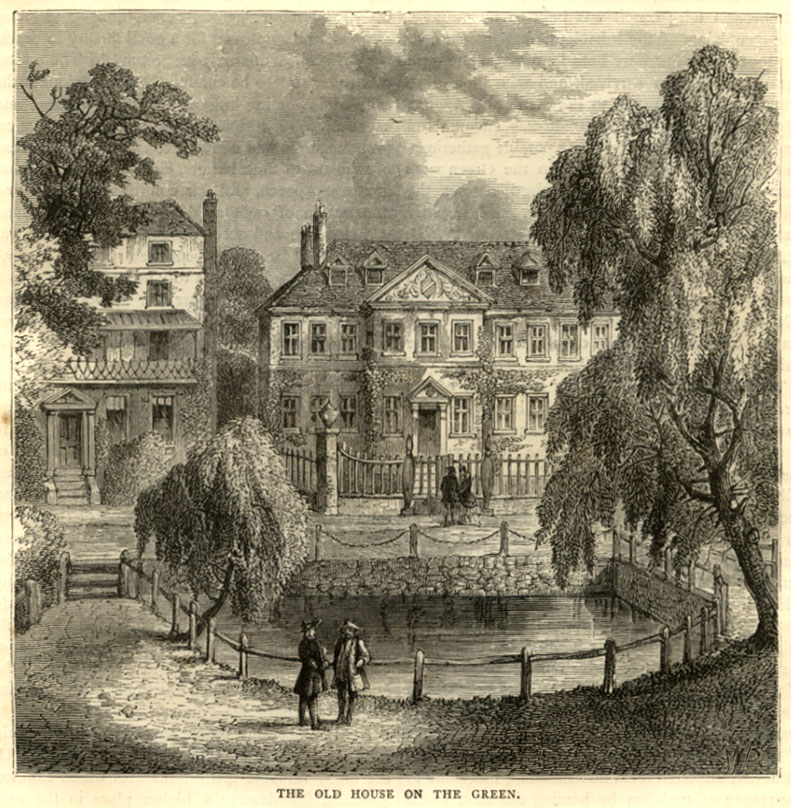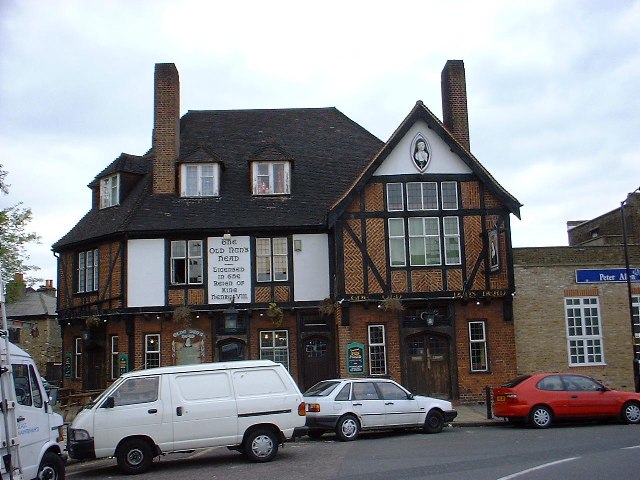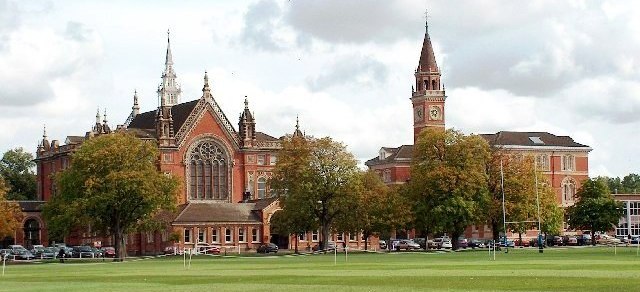|
Camberwell
Camberwell () is a district of South London, England, in the London Borough of Southwark, southeast of Charing Cross. Camberwell was first a village associated with the church of St Giles and a common of which Goose Green is a remnant. This early parish included the neighbouring hamlets of Peckham, Dulwich, Nunhead, and part of Herne Hill (the rest of Herne Hill was in the parish of Lambeth). Until 1889, it was part of the county of Surrey. In 1900 the original parish became the Metropolitan Borough of Camberwell. In 1965, most of the Borough of Camberwell was merged into the London Borough of Southwark.Southwark London Borough Council �Community guide for Camberwell To the west, part of both West Dulwich and Herne Hill come under the London Borough of Lambeth. The place now known as Camberwell covers a much smaller area than the ancient parish, and it is bound on the north by Walworth; on the south by East Dulwich and Herne Hill; to the west by Kennington; and on ... [...More Info...] [...Related Items...] OR: [Wikipedia] [Google] [Baidu] |
Metropolitan Borough Of Camberwell
Camberwell was a civil parish and metropolitan borough in south London, England. Camberwell was an ancient parish in the county of Surrey, governed by an administrative vestry from 1674. The parish was included in the area of responsibility of the Metropolitan Board of Works in 1855 and became part of the County of London in 1889. The parish of Camberwell became a metropolitan borough in 1900, following the London Government Act 1899, with the parish vestry replaced by a borough council. In 1965 the borough was abolished and its former area became part of the London Borough of Southwark in Greater London. Geography The original parish of Camberwell St Giles had three divisions. They were the Liberty of Peckham to the east, the Hamlet of Dulwich to the southwest and the central division of Camberwell proper. The liberty of Peckham stretched from north of Old Kent Road to Honor Oak, taking in Peckham and Nunhead. Camberwell stretched from what is now Burgess Park in the north t ... [...More Info...] [...Related Items...] OR: [Wikipedia] [Google] [Baidu] |
St Giles' Church, Camberwell
St Giles' Church, Camberwell, is the parish church of Camberwell, a district of London which forms part of the London Borough of Southwark. It is part of Camberwell Deanery within the Anglican Diocese of Southwark in the Church of England. The church is dedicated to Saint Giles, the patron saint of the disabled. A local legend associates the dedication of St Giles with a well near Camberwell Grove, which may also have given Camber-well its name. An article on the church from 1827 states: "it has been conjectured that the well might have been famous for some medicinal virtues and might have occasioned the dedication of the church to this patron saint of cripples." History The ancient parish stretched from Boundary Lane, just north of the present Albany Road, south as far as Sydenham Hill. The Anglo-Saxon church on the site of St Giles', and recorded in the ''Domesday Book'', was almost certainly built of wood and stood amongst fields and woodland. The church was later rebuilt ... [...More Info...] [...Related Items...] OR: [Wikipedia] [Google] [Baidu] |
Camberwell And Peckham (UK Parliament Constituency)
Camberwell and Peckham is a constituency represented in the House of Commons of the UK Parliament since its 1997 creation by Harriet Harman of the Labour Party. Harman had served for the previous constituency of Peckham since 1982. She is a former cabinet minister and the "Mother of the House of Commons", having the longest record of continuous service of any female MP. Constituency profile The constituency is very ethnically diverse, and has the highest proportion of black, African, and Afro-Caribbean residents of all constituencies in England and Wales, according to Office of National Statistics 2011 Census figures, at 37.4%. This includes 22.4% being African (highest), 9.3% being Caribbean and 5.7% being of any other black background (highest). More than two-fifths (40.8%) of residents were born outside of the UK. With 50.6% of all residential properties being social housing, it also has the highest proportion of social housing of any parliamentary constituency in the Unit ... [...More Info...] [...Related Items...] OR: [Wikipedia] [Google] [Baidu] |
Peckham
Peckham () is a district in southeast London, within the London Borough of Southwark. It is south-east of Charing Cross. At the 2001 Census the Peckham ward had a population of 14,720. History "Peckham" is a Saxon place name meaning the village of the River Peck, a small stream that ran through the district until it was enclosed in 1823. Archaeological evidence indicates earlier Roman occupation in the area, although the name of this settlement is lost. The Oxford Dictionary of English Place-names (1991, 1998) gives the origin as from Old English *''pēac'' and ''hām'' meaning ‘homestead by a peak or hill’. The name of the river is a back-formation from the name of the village. Peckham Rye is from Old English ''rīth'', stream. Following the Norman Conquest, the manor of Peckham was granted to Odo of Bayeux and held by the Bishop of Lixieux. It was described as being a hamlet on the road from Camberwell to Greenwich. Peckham came within the newly created Metropol ... [...More Info...] [...Related Items...] OR: [Wikipedia] [Google] [Baidu] |
Camberwell Green
Camberwell Green is of common land in Camberwell, south London laid out as a formal park. Its south-west corner is the junction of Camberwell Road/Denmark Hill and Camberwell New Road/Camberwell Church Street. Its other edges share one point of motor vehicle access. Behind a library at the north-east of the Green is the former Camberwell Magistrate's Court, and at the north-west is a home for the elderly. To the south-west, and overlooking the Green, is a parade of shops including banks and restaurants. The Green is recorded in surveys and accounts of the manor of Camberwell and vestry of Southwark as common land, meaning owned by the lord of the manor but subject to grazing and other rights of local residents. It was bought by Camberwell Parish Vestry in the late 19th century to protect it from development. Camberwell Green is also the name of the London Borough of Southwark electoral ward around the Green. Measured from building to building, the open space including ... [...More Info...] [...Related Items...] OR: [Wikipedia] [Google] [Baidu] |
Nunhead
Nunhead is a suburb in the London Borough of Southwark in London, England.Southwark Council Nunhead and Peckham Rye Community Council It is an inner-city suburb located southeast of Charing Cross. It is the location of the Nunhead Cemetery.BBC London Nunhead Cemetery/ref> Nunhead has traditionally been a working-class area and, with the adjacent neighbourhoods, is currently going through a lengthy process of gentrification. Nunhead is the location of several underground reservoirs, built by the Southwark and Vauxhall Waterworks Company.Peckham and Dulwich', Old and New London: Volume 6 (1878), pp. 286–303 Etymology The name is first recorded in a deed of 1583 relating to a land sale including estates "lying at Nunn-head." The origin of the name Nunhead is not certain but is believed to be derived from a local inn named variously ''The Nun's Head or The Nunhead Tavern''. Local historians and local legend maintain that this name refers to the beheading of a nun during the ... [...More Info...] [...Related Items...] OR: [Wikipedia] [Google] [Baidu] |
Denmark Hill
Denmark Hill is an area and road in Camberwell, in the London Borough of Southwark. It is a sub-section of the western flank of the Norwood Ridge, centred on the long, curved Ruskin Park slope of the ridge. The road is part of the A215 which north of its main foot, Camberwell Green, becomes Camberwell Road and south of Red Post Hill becomes named Herne Hill, another district. Toponymy The area and road is said to have acquired its name from Queen Anne's husband, Prince George of Denmark, who hunted there. High Street, Camberwell was renamed Denmark Hill as part of metropolitan street renaming. History In John Cary's map of 1786 the area is shown as ''Dulwich Hill''. The only building apparent is the "Fox under the Hill". The present "Fox on the Hill" pub is a hundred yards or so further up (south), on the site of former St Matthew's Vicarage adjacent to a triangle of land rumoured to be a " plague pit" or burial ground. The name of the area was changed in honour of the h ... [...More Info...] [...Related Items...] OR: [Wikipedia] [Google] [Baidu] |
London Borough Of Southwark
The London Borough of Southwark ( ) in South London forms part of Inner London and is connected by bridges across the River Thames to the City of London and London Borough of Tower Hamlets. It was created in 1965 when three smaller council areas amalgamated under the London Government Act 1963. All districts of the area are within the London postal district. It is governed by Southwark London Borough Council. The part of the South Bank within the borough is home to London Bridge terminus station and the attractions of The Shard, Tate Modern, Shakespeare's Globe and Borough Market that are the largest of the venues in Southwark to draw domestic and international tourism. Dulwich is home to the Dulwich Picture Gallery and the Imperial War Museum is in Elephant and Castle. History Southwark is the oldest part of south London. An urban area to the south of the bridge was first developed in the Roman period, but subsequently abandoned. The name Southwark dates from the establishmen ... [...More Info...] [...Related Items...] OR: [Wikipedia] [Google] [Baidu] |
Kennington
Kennington is a district in south London, England. It is mainly within the London Borough of Lambeth, running along the boundary with the London Borough of Southwark, a boundary which can be discerned from the early medieval period between the Lambeth and St George's parishes of those boroughs respectively. It is located south of Charing Cross in Inner London and is identified as a local centre in the London Plan. It was a royal manor in the parish of St Mary, Lambeth in the county of Surrey and was the administrative centre of the parish from 1853. Proximity to central London was key to the development of the area as a residential suburb and it was incorporated into the metropolitan area of London in 1855. Kennington is the location of three significant London landmarks: the Oval cricket ground, the Imperial War Museum, and Kennington Park. Its population at the United Kingdom Census 2011 was 15,106. Kennington is served by Kennington Police Station. History Toponymy ... [...More Info...] [...Related Items...] OR: [Wikipedia] [Google] [Baidu] |
East Dulwich
East Dulwich is an area of South East London, England in the London Borough of Southwark. It forms the eastern part of Dulwich, with Peckham to the east and Camberwell to the north. This South London suburb was first developed in the nineteenth century on land owned by the College of God's Gift. It was originally part of the much larger, historic parish of Camberwell, which later became the Metropolitan Borough of Camberwell, and included Camberwell, Peckham, Dulwich, Nunhead, and other London districts. History Saxon Dulwich The earliest record of East Dulwich comes from 967 when Edgar the Peaceful granted Dilwihs to a thane named Earl Aelfheah. Dilwihs meant "meadow where the dill grew". At the time East Dulwich was likely just a hamlet or group of small farms centered around what is today known as Goose Green. Medieval East Dulwich In 1066 King William I of England conquered England and Dulwich became property of the new Norman dynasty after taking the land from King Har ... [...More Info...] [...Related Items...] OR: [Wikipedia] [Google] [Baidu] |
Herne Hill
Herne Hill is a district in South London, approximately four miles from Charing Cross and bordered by Brixton, Camberwell, Dulwich, and Tulse Hill. It sits to the north and east of Brockwell Park and straddles the boundary between the boroughs of Lambeth and Southwark. There is a road of the same name in the area (which is part of the A215 and was formerly called Herne Hill Road), as well as a railway station. Toponymy In Rocque's 1746 map, the area is shown as "Island Green", probably reflecting the presence of the River Effra and smaller tributaries.''The Story of Norwood'' J.B. Wilson & H.A. Wilson Early references to the area also use the form "Ireland Green". The earliest documented reference to "Herne Hill" is in two fire insurance policies issued by the Sun Insurance Company in 1792 (where the spelling is "Hearns" and "Herns" Hill). History 1291 - Manor of Milkwell The area now known as Herne Hill was part of the Manor of Milkwell, which existed from at le ... [...More Info...] [...Related Items...] OR: [Wikipedia] [Google] [Baidu] |
Dulwich
Dulwich (; ) is an area in south London, England. The settlement is mostly in the London Borough of Southwark, with parts in the London Borough of Lambeth, and consists of Dulwich Village, East Dulwich, West Dulwich, and the Southwark half of Herne Hill (which is often referred to as the North Dulwich triangle). Dulwich lies in a valley between the neighbouring districts of Camberwell (to the west), Crystal Palace, Denmark Hill, Forest Hill, Peckham, Sydenham Hill, and Tulse Hill. For the last four centuries Dulwich has been centred on the College of God's Gift, also known as the "Old College", which owned most of the land in the area today known as the Dulwich Estate. The College, founded with educational and charitable aims, established three large independent schools in the 19th century (Dulwich College, Alleyn's School and James Allen's Girls' School). In recent decades four large state secondary schools have opened in the area (The Charter School East Dulwich, ... [...More Info...] [...Related Items...] OR: [Wikipedia] [Google] [Baidu] |


.jpg)







